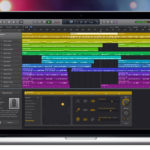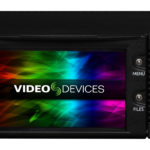
USER REVIEW: Canon 50-1000mm Lens
Posted on Jul 15, 2015
The new Canon 50-1000mm lens
Cinematographers migrating from 2/3″ format acquisition to large sensor and particularly 4K, were faced with limited choice of lenses available for large sensor cameras and these were very large and heavy and only offered around 1/3 of the range of equivalent 2/3″ lenses. Then Canon brought out the 6.6Kg 50-1000mm lens with the option of an extender which would take that unto 1500mm but with a inherent loss of perhaps a stop of sensitivity. Jonathan Jones of Ember Films, who have been helping shoot One Planet (The follow up to Plant Earth) used the new lens recently.
Boom! Today we brought out the big guns!! https://t.co/155IS4HF7d
— Ember Films (@EmberFilms) July 11, 2015
“It’s a pretty remarkable piece of glass but it’s heavy enough in fact it’s heavier than a HJ40x14 lens. We were filming birds with it on a RED Epic camera – there’s not that much lens option really to cover 5K plus on a servo driven zoom. You’ve got the Fuji Cabrios and the Aluras if you ‘motorise-drive’ them but the Canon one is a driven lens already and what a range, it’s quite remarkable. Alright the stop isn’t very fast but the reality is you don’t need a fast stop if you’re dealing with those kinds of focal lengths. T5 is loads if you’re at 800mm, you’re never going to be anymore wider open than that because you’re just not going to see anything, it’s going to be mush.
“We wanted it for wildlife shooting, the BBC has bought a couple of them as part of their long lens kits because they cover the higher res and the picture quality is really clean, is really nice. We didn’t use the extender as obviously to make it anymore than 1000mm is pretty full on and also when we were filming, it was towards the end of the day, we were filming barn owls. Maybe in really full day sun in some countries you would be fine but you’re going to need a decent stop, f8 f11 something like that. You put the extender in and you’re going to lose stop, it’s an extra piece of glass in the middle, it’s an extra piece of something that is going to hinder your image.
“The HJ40 was a B4 lens so only covered the 2/3in chip and had the stabilisation. So in terms of the two lenses they are pretty similar. Like all these things they take a while to get used to and find out how the focus is and really get a feeling for them. But it’s basically that class of lens now covering 6K. Having said that we didn’t actually do a shot in 6K on it as we were going for higher frame rates. 120fps or 100fps meant we were in the 5K/4K world.

“There’s no image stabilisation on the 50-1000mm lens but there’s an argument that when we were using the HJ40 you often turned the stabilisation off. If you’re at the long end of the lens and you’re panning, the camera’s trying to work out what you’re passing and work out whether that should be moving or not, Having stabilisation say on a 100mm lens is fine because the chances are that there’s not much going on but following something fast, even somebody running and you’re on the end of one of those lenses you’re moving that camera quite fast because that person is quite a long way away. If you’re that tight in or you’re shooting a hand or a foot, there’s a lot of movement so there are a lot of things passing in front of the camera, the lens has to make a decision about what that thing is.
“With the HJ40 you had the horizontal or the vertical stabilisation and you could switch between them, we used to just turn them off. When you’ve got that shot with Wildlife and the lens does something weird you just don’t want to take the risk. Different if you’re filming much more static things like sports events that makes a difference because you might be more composed.
“With the 1000mm it’s not a cure all. If you wanted to shoot around 50-250mm there are arguably better lenses that you could use. They do the 17-40mm as well in the same range so with both lenses you’ve covered yourself for most set-ups. If you’re going to use the 50-1000mm lens then most of your subjects are going to be around the 300-400mm mark. Then you’ve got the option to push in and also the option to give yourself a bit of width. Also if you’ve got a subject in the 300mm range you don’t want to change lenses. You know you can get a tight, a mid and a wide shot in one very quick movement. Obviously there’s no lens that does 17-1000mm that would be amazing but would also be enormous and massively expensive.
“There is a drop off at 500-1000mm in terms of stop as well but there is no real sweet spot for that lens because you can use it for so many different things. The point is that it is good all the way. If you’re an event film maker or if you’re doing a drama or observational stuff and you don’t want people to know the lens is there or you want to play out a scene without having a wide angled lens in your face it’s great because you’ve got scope to go in tighter or find the exact shot you want. Sometimes you find with the 300mm (Canon’s 30-300mm) it’s not quite enough and that’s when you have to use the doublers but then you have to compromise a stop and any loss in quality.
“The 30-300mm lens is more a Cine-geared lens, the focus barrel is bigger so you have to turn it more, the 50-1000mm is like the HJ40 so more finer focussing. So if you wanted to do real drama with people who aren’t moving too much and you have a focus puller the 30-300 is probably a better fit because the lens barrel’s bigger. With the 50-1000mm it’s much finer so your focus pull might be 5mm on a Preston lens controller where it might be a centimetre or two on the other one.
“You also have to be a bit careful that the tripod head you use is man enough for the job with the 50-1000mm, something like an O’Connor 2060 or Ronford Baker Atlas 30. Also try to use really heavy duty legs as carbon fibre legs will flex. Your ground base needs to be as solid as a rock, you can get away with not having it if your shot is really still and you’re just finding a landscape or something then it doesn’t really matter and also it depends on the frame rate you’re shooting. If you had that lens on a 4k Flex high speed camera and you were shooting at 500fps it doesn’t really matter what the tripod is as long as it can hold the weight. You’re not going to see any of the vibration over the frame rate. If I knew we were just shooting high speed and also that we had to walk for three miles I wouldn’t take the big tripod.”













